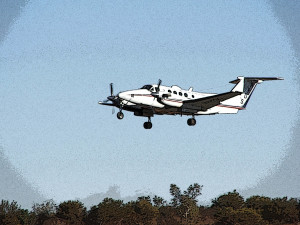“You’re too low on the approach, come on, add some power and raise the nose!” How often have I heard that from other instructors and check pilots. And it’s one of the worst things that we can do and say as a flight instructor or check pilot.
If a pilot is, in your opinion, is too low on the approach, simply telling him/her that fact robs you as the instructor or check pilot of so much information, and significantly delays the ability of the pilot to improve their flight skills. Why is this? Let me suggest 4 insights into the pilot, that you have missed out on:
You have missed out on finding out if the student has:
- A perception or awareness (of the required aircraft state) problem,
- A decision making problem,
- A knowledge problem (of the applicable technique)
- Been overwhelmed by the situation.
To ensure that you get these insights into the student, use the basic teaching methodology of:
1) Ask the student to clarify their perception with a casual question – “How is it going?” This identifies whether the student has a perception/awareness problem. If they can state (correctly) that they are low, you know their perception is good – but they must have some other problem because they are not addressing the low situation. If they have the wrong perception/awareness , correct their perception immediately by telling them whether it is high/low, falling short or overshooting and then wait to see if they make the correct adjustment.
2) If their perception was correct (or if you have just corrected it), don’t tell them what to do, but simply wait to see if they make the correct adjustment. This helps to identify whether the student has a decision-making problem and/or a knowledge of technique/action problem.
3) If they do not immediately make the correct adjustment, prompt them with “what should you do if you are…?” Their response identifies whether the student knows the correct technique required and their actions identifies their decision making skills and confidence to implement a solution.
4) You have now identified whether they have a perception problem, a decision-making problem, or a lack of knowledge of technique/action problem.
5) If they do not make the correct adjustment, then finally clearly instruct them with the correct adjustment. This identifies whether the student can still follow instructions or whether they are overwhelmed. If they cannot action what you have suggested, takeover and demonstrate the correct actions. If you need to take over, this probably indicates that the student has been overwhelmed by the situation, and may need to have some of their stress, workload or tasks reduced so that they can cope with the pressure.
Most aspects of flight training are best approached by a general question or prompt (how is it? Now what? What’s next?) to then allow assessment of the student’s:
- Perception skills
- Decision making skills
- Knowledge of Technique/required action
- Level of stress
Once you have narrow down what the real issue is, then effective teaching can begin as you focus in the identified area of either perception, skill or knowledge that needs the attention.
What has been your experience of this? How can you apply this to other phases of training?
These are some of the notes to guide instructors that come from TRACDSolutions the training syllabi developed for Part 61 courses. If you want help with developing Part 61 courses look here.
